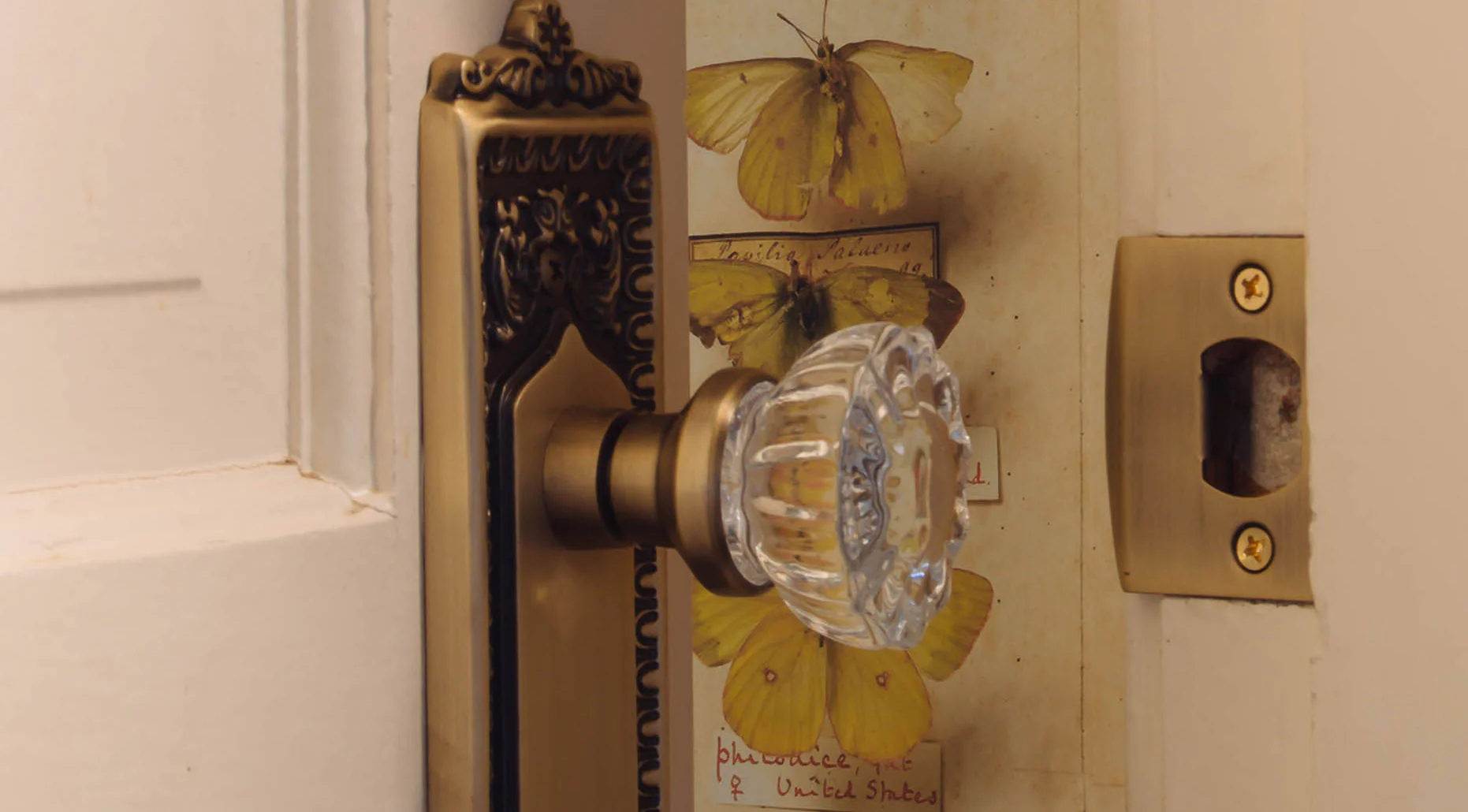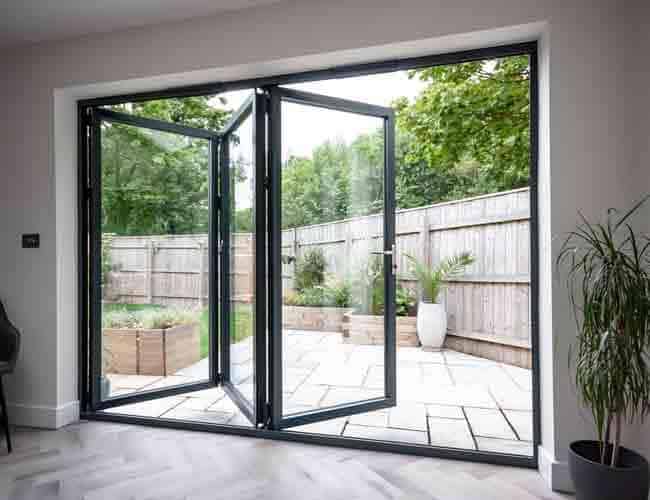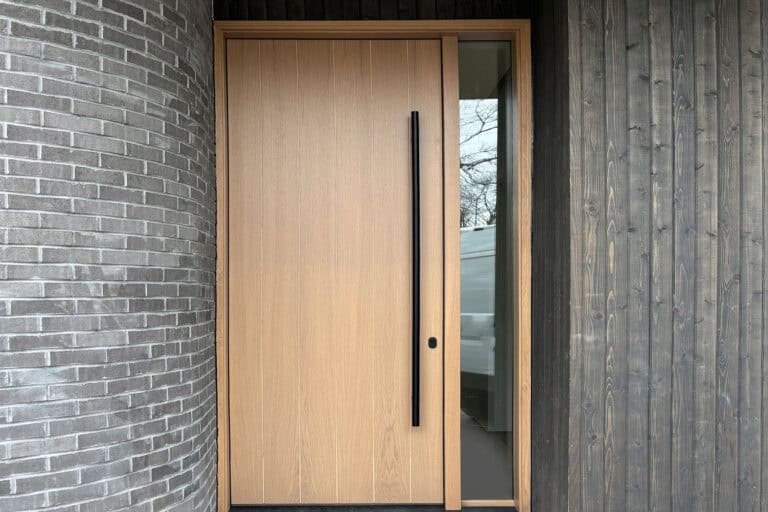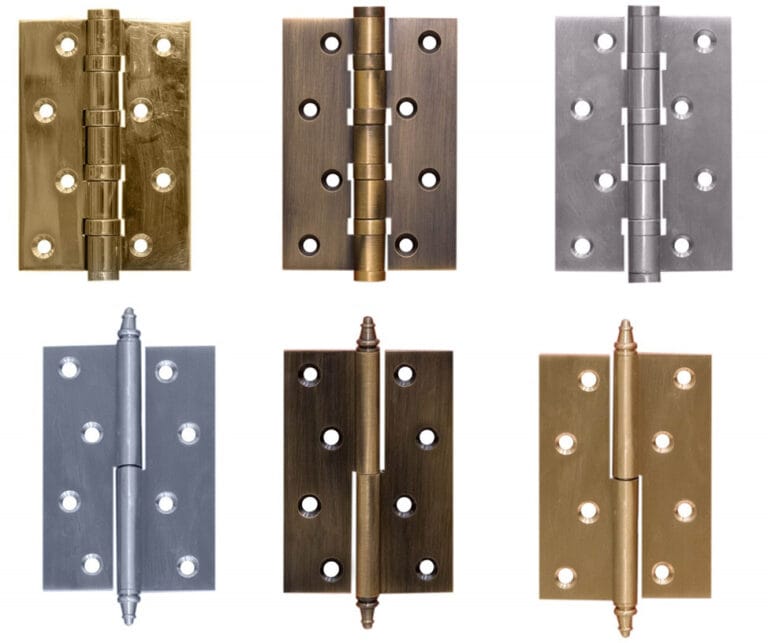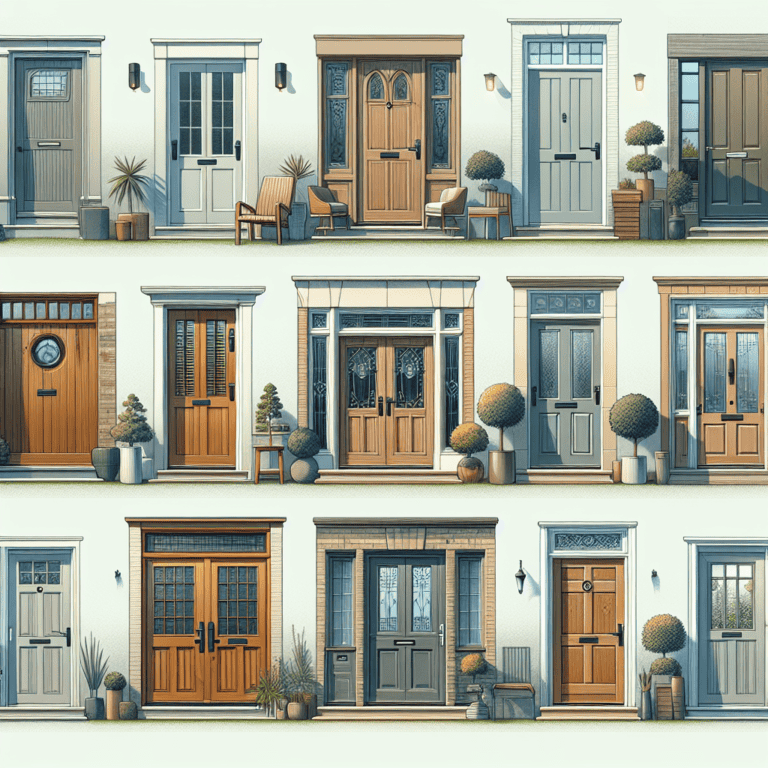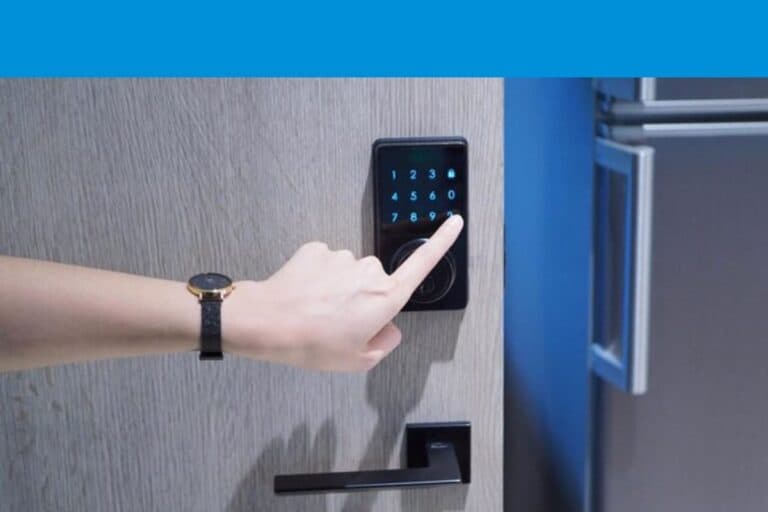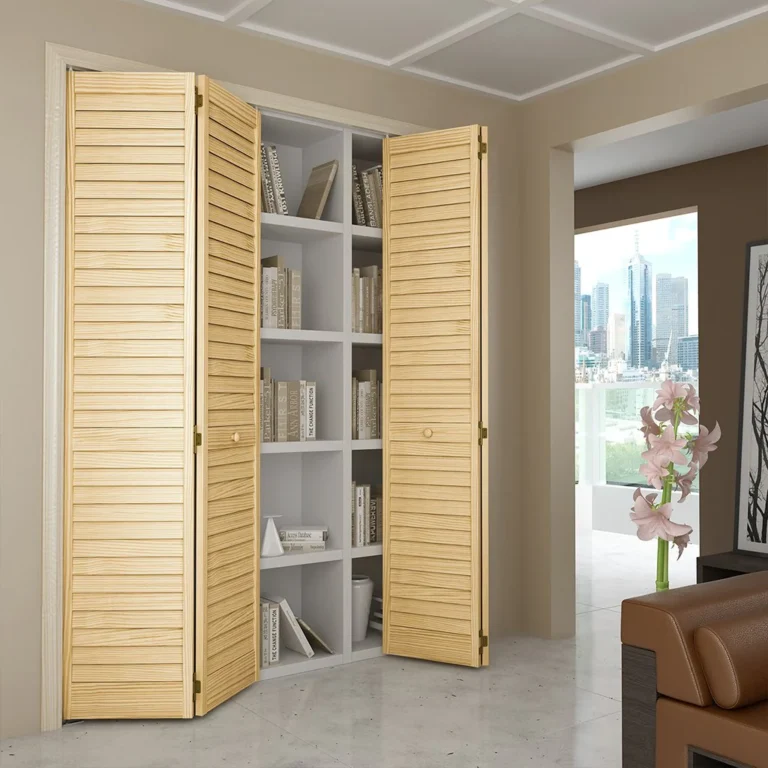Strike Plates
Ever thought about the small but critical role a strike plate plays in securing doors? The often overlooked piece of door security, always on guard. You probably never gave it much attention until now.
But picture this: Every time you shut that front door behind you, there’s an unassuming piece of metal catching and holding firm. That’s the strike plate – securing homes and businesses alike from unwanted intruders.
It’s time to learn more about these hidden parts, exploring the purpose, types, construction materials – even how to install one properly. By the end, you’ll be able to not only recognize their value but also make a well-informed selection for your specific requirements.
Table Of Contents:
- Understanding the Role of Strike Plates in Door Security
- Different Types of Strike Plates and Their Uses
- Materials Used in Strike Plate Construction
- The Installation Process for Door Strike Plates
- Choosing the Right Strike Plate for Your Door
- Common Problems and Solutions Related to Strike Plates
- FAQs in Relation to Strike Plates
- Conclusion
Understanding the Role of Strike Plates in Door Security
Strike plates, often overlooked pieces of door hardware, play a pivotal role in your home’s security. Their primary job is to guide and hold the door lock bolt or latch securely when you close the door.
The strike plate works hand-in-hand with your lock mechanism. When you turn that key or twist the knob, it’s not just about moving parts within the lock itself. The strike plate acts as an anchor, offering a place for those locking components to grasp onto tightly.
Think of strike plates like goalkeepers in soccer – they may seem passive players on the field, but without them, there would be no game. Just as goalkeepers block goals from opposing teams, strike plates help thwart potential break-ins by providing added resistance against forced entry attempts.
A Critical Line of Defense Against Break-Ins
Burglars love easy targets, but what they don’t love are doors equipped with high-quality locks and robust strike plates. Doors featuring well-installed strike plates require more effort (and noise) to breach – enough to deter most thieves looking for quick scores.
In fact, according to statistics compiled by the FBI’s Uniform Crime Reporting Program, approximately 34% of burglaries occur through front doors, indicating their vulnerability if left unsecured adequately.
Making Your Locks Work Harder
Here’s an insider tip: a good lock is only as effective as the strike plate it’s working with. If you’ve ever had to jiggle your key or shove your door to get it to latch, there’s a high chance that the problem lies not in the lock but in an ill-fitted or worn-out strike plate.
The right strike plates enhance the performance of locks, ensuring they operate smoothly and securely every time. That jiggling and shoving? It becomes history when you pair up quality locks with sturdy, well-aligned strike plates.
Different Types of Strike Plates and Their Uses
When it comes to door security, the strike plate often plays a bigger role than most people realize. These small metal plates help lock mechanisms do their job effectively, offering extra strength to your doors. But not all strike plates are created equal; they come in different types each with its unique use.
Before we continue, it is important to note this article is covering strike plates for residential openings. Strike plates for commercial hardware have many more options and we’ll cover those in a separate post.
Standard Strike Plates
The standard strike plate, as the name suggests, is the most common type you’ll find on residential doors. It’s a flat piece of metal with two screw holes and a hole for the latch or bolt. Standard strike plates offer basic protection against forced entry but might fall short when faced with heavy-duty attacks.
T-Strike Plates
Moving up from standard ones, we have T-strike plates which get their name from their ‘T’ shape design that offers more room for latches or bolts. Because of this feature, these are typically used on heavier doors where stronger locks are needed.
Full Lip Strike Plates
If aesthetics matter as much as functionality to you then full lip (or D-shaped) strike plates could be your go-to option. They’re designed so that no sharp edges show once installed – making them blend seamlessly into any door design while providing added security.
Deadbolt Strike Plates
Deadbolt strike plates are essential components in home security, often overlooked despite their crucial role. These metal plates, installed on door frames, reinforce the area where the deadbolt latch extends into the frame, providing enhanced resistance against forced entry. High-quality strike plates are typically made of heavy-duty materials like steel and feature extra-long screws that anchor deeply into the wall stud, significantly boosting door security. Upgrading to a robust deadbolt strike plate is a simple yet highly effective way to bolster the first line of defense for any home.
Extended Lip Strike Plates
The last type we’ll cover are extended lip strike plates. These are perfect for doors with a deeper than usual frame or where the door fits into the frame in such a way that a normal strike plate wouldn’t be enough to catch the bolt properly. The ‘extended’ part ensures proper latching, thus making sure your lock mechanism works as intended.
Wrapping it all up, selecting the right strike plates can be more complex than anticipated. Each type has its own job to do. Knowing these differences can guide your choices when boosting home security.
Materials Used in Strike Plate Construction
The choice of material used to manufacture strike plates can greatly impact their durability, security, and aesthetics. Let’s discuss the most common materials.
Brass Strike Plates
One of the go-to materials for strike plate construction is brass. It’s known for its resilience and ability to withstand heavy use over time. Plus, it gives a classy touch to your door hardware. Architectural Digest praises brass for its versatility and enduring appeal.
Steel Strike Plates
A more robust option is steel. Its strength makes it ideal for high-security applications where doors need extra protection from forced entry attempts. According to Consumer Reports’ guide on home windows, solid steel provides superior resistance against break-ins compared with other materials.
Zinc Alloy Strike Plates
Zinc alloy is another commonly used material due to its cost-effectiveness without compromising quality or durability too much. As highlighted by JOM: The Journal of The Minerals Metals & Materials Society (TMS), zinc alloys are often chosen when a balance between performance and price point needs be struck… pun intended.
- All three materials offer varying levels of resistance against corrosion – an essential factor considering that doors are exposed regularly to changing weather conditions.
- In terms of aesthetics, brass and zinc alloy strike plates offer a wider range of finishes compared to steel ones. This allows for better coordination with existing door hardware.
- On the security front, while all three materials can provide solid protection when used in quality strike plates, steel tends to edge out the competition due to its sheer strength.
In short, each material comes with its own set of advantages. When choosing your strike plate material, you’ll need to weigh these against factors such as your budget and specific needs.
The Impact on Durability & Security
The durability of a strike plate directly affects how well it can enhance door security over time. Materials like brass and steel have proven track records in this department.
The Installation Process for Door Strike Plates
Installing a door strike plate is an easy DIY project that can significantly boost your home’s security. Before beginning, ensure you have the necessary tools for the job.
Tools Needed
You’ll need to have a screwdriver, chisel and hammer close by in order to commence. If possible, use screws longer than those supplied with your strike plate for added strength.
Step-by-Step Guide
1. Positioning the Strike Plate:
To begin with, align the hole in the strike plate with the latch bolt on your door lock. This might seem like no-brainer advice but believe me when I say this – it’s a common mistake many homeowners make.
2. Marking Out:
This step involves marking out where exactly your new shiny piece of metal will live – i.e., onto your door frame using a pencil or marker pen (I prefer metallic Sharpies, they add that extra bit of flair.). Make sure you also mark out where any screw holes will be too.
3. Chiseling Away:
No worries if you’re not Michelangelo. We just need enough space to fit our new friend Mr.Strike Plate snugly into place here. So grab that chisel and hammer away at the inside of these marks until there’s sufficient depth for our guy to sit flush against the wood surface.
4. Drilling Pilot Holes:
Before we let loose all those screws, it’s wise to drill some pilot holes. This will make the job easier and prevent wood from splitting.
5. Screwing in the Strike Plate:
The finish line is near. Now we just need to secure our strike plate with screws using a screwdriver. Remember that tip about longer screws? Here’s where they come into play for an extra layer of security.
Tips for Successful Installation
Always measure twice before you start cutting or drilling. Nobody likes having to redo work because of simple errors – we’ve all been there, right?
Choosing the Right Strike Plate for Your Door
Selecting the right strike plate is a critical decision that affects both your door’s durability and security. Seemingly insignificant, the correct strike plate can be paramount in keeping your residence or workspace secure.
Your Door Type Matters
The type of door you have plays an important role in choosing a suitable strike plate. For instance, heavy-duty doors need sturdy plates like Schlage’s maximum security deadbolt strike, designed for exceptional strength and resistance against physical attacks.
If you’ve got lighter interior doors, consider standard-sized plates which provide ample protection without overkill. But remember, quality should never be compromised even with less frequently used doors.
Frequency of Use Is Key
Frequent use demands high-endurance materials to avoid frequent replacements. Doors subjected to heavy traffic – think about commercial spaces or bustling households – will benefit from robust materials such as stainless steel or brass due to their durability and long-lasting performance.
Evaluating Security Needs
How secure do you want your space? If higher security levels are needed, look into options offering enhanced features like box strikes that encompass the latch bolt entirely or T-strike plates providing additional stability during forced entries – giving burglars quite a hard time.
Common Problems and Solutions Related to Strike Plates
Strike plates, although small in size, play a pivotal role in the door’s security. But they aren’t immune to problems. Here are some common issues with strike plates and how to resolve them.
Misalignment of Door Latch and Strike Plate
A common issue is when the door latch doesn’t align properly with the strike plate. This could prevent your door from closing or locking correctly. It usually happens due to wear over time or improper installation.
To solve this problem, first identify where exactly the misalignment occurs by inspecting both components closely. Family Handyman provides an excellent guide on how to do this. Once identified, adjust either the latch or strike plate accordingly until they align perfectly again.
Wear and Tear Damage
Your doors get used multiple times every day which leads inevitably leads to wear and tear damage on your strike plates over time.
If it gets too severe, consider replacing your old worn-out one for a more durable model made out of stronger materials like stainless steel. Door Security Group has a list of high-quality options available online.
Noisy Doors Due To Loose Strike Plates
Noise while opening or closing doors often comes from loose strike plates rattling against other parts of lock mechanisms – not ideal if you’re trying not wake someone up late at night.
Fixing this problem is pretty simple: just tighten the screws holding the strike plate in place. If the current strike plates don’t do the trick, you could try longer or wider ones for a firmer fit.
Inadequate Security
If your home’s been targeted before, it’s possible your strike plates aren’t providing enough security. Traditional models often can’t withstand forceful entry attempts like kick-ins.
Consider upgrading to high-security strike plates designed specifically to resist such attacks. United Locksmith outlines some of these reinforcement kits here.
Just a friendly reminder, don’t forget about the doors.
FAQs in Relation to Strike Plates
What is the purpose of the strike plate?
The role of a strike plate is to fortify your door’s lock. It also guides the latch into its hole when you shut the door.
Is a strike plate necessary?
Absolutely, yes. Strike plates enhance your home’s security by adding an extra layer of metal that reinforces where your lock bolt enters.
What is the difference between a keeper and a strike plate?
A keeper holds doors or windows in place while closed, but a strike plate focuses on guiding and reinforcing locks on doors.
What is the standard door strike plate size?
The typical size for most residential door’s strike plates are about 2-1/4 inches tall by 1-5/8 inches wide.
Conclusion
Strike plates, right? They’re more than just door accessories.
We’ve unlocked their role in enhancing your home’s security. We’ve sifted through different types and uses, even delved into the materials they’re made from.
You now have a blueprint to install one yourself. You know what factors to consider when choosing the perfect fit for your door needs. And you’re armed with solutions to common problems that may pop up along the way.
Make them count as part of your fortress strategy because peace of mind is priceless.
